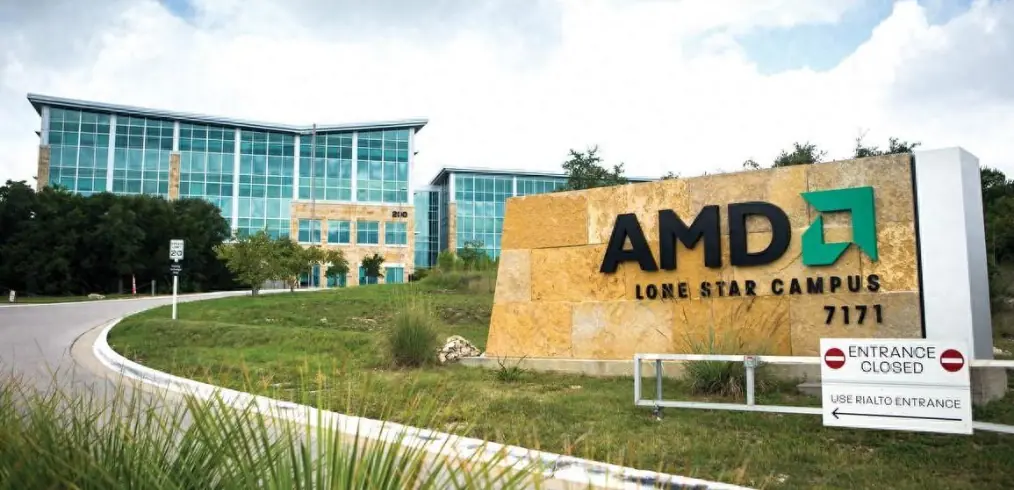
1. A Brief History of AMD
When it comes to May 1, everyone knows it as Labor Day. But for digital hardware enthusiasts, it’s also a special day – the anniversary of AMD’s founding.
AMD was officially founded on May 1, 1969, just a year after its long-time rival Intel. It’s now been 55 years since its inception. In AMD’s early years, the two companies shared a honeymoon period. In February 1982, AMD was the second manufacturer and supplier of Intel’s 8086/8088 processors, which were used in IBM PCs and later extended to the 80286 series.
Afterward, Intel refused to continue providing technology licenses, causing the two companies to turn against each other and eventually end up in court. AMD won the case in 1994, receiving over $1 billion in compensation. From then on, the two companies have been fierce rivals.
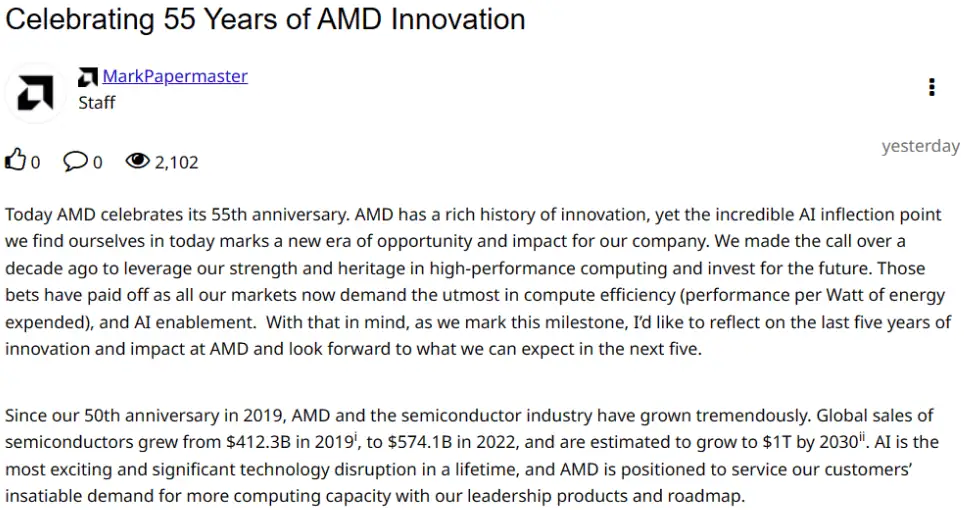
In July 2006, AMD acquired ATI for $5.4 billion. In October 2020, it acquired Xilinx for $35 billion. Currently, AMD’s market value is approximately $233 billion, surpassing Intel by around $100 billion, making it “far ahead.”
2. Why is this year’s AMD executive speech important?
The importance of this year’s AMD executive address lies in several factors. Firstly, May 1, 2024, marks the 55th anniversary of AMD’s establishment, which in itself is significant. However, the decision to write about this commemoration is not solely based on its anniversary status but also due to other special implications associated with it.
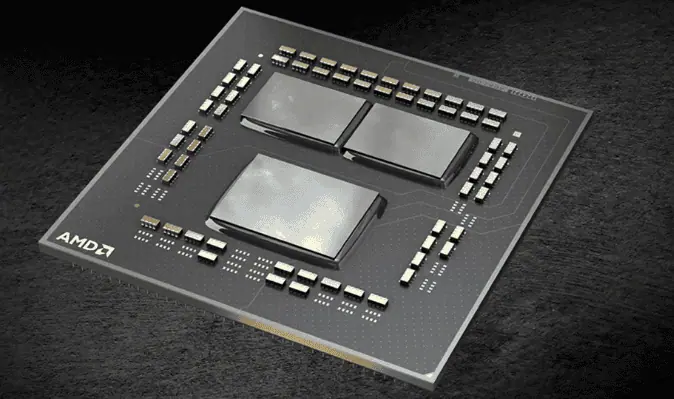
On this anniversary day, Mark Papermaster, the Chief Technology Officer and Executive Vice President of Technology and Engineering at AMD published a lengthy address on the company’s official website. It’s well known that artificial intelligence (AI) has become the forefront of technological innovation and competition. Both AMD and Intel are set to release next-generation products in the latter half of this year, with a key focus on the AI Neural Processing Unit (NPU) embedded within processors.
In his address, Mark Papermaster not only reviews AMD’s history and achievements but also discusses and reveals many of the company’s analyses and broad plans for the future of the technology industry over the next five years. Therefore, the address holds considerable reference value.
3. Full text of the speech by AMD executives
Below, the editor will share the translated speech by Mark Papermaster with everyone. The content has been slightly modified and polished for reference only:
Today marks the 55th anniversary of AMD’s establishment.
Looking back, AMD has a rich history of innovation. However, the incredible rise of artificial intelligence (AI) has become a turning point leading to technological innovation and industry competition, ushering us into a new era filled with opportunities and transformations.
Over a decade ago, we decided to invest in the future leveraging our strengths in high-performance computing. Now, those investments have paid off, as all our customers demand chips with higher computational efficiency (performance per watt) and support for AI. Our various early investments have helped meet these demands.
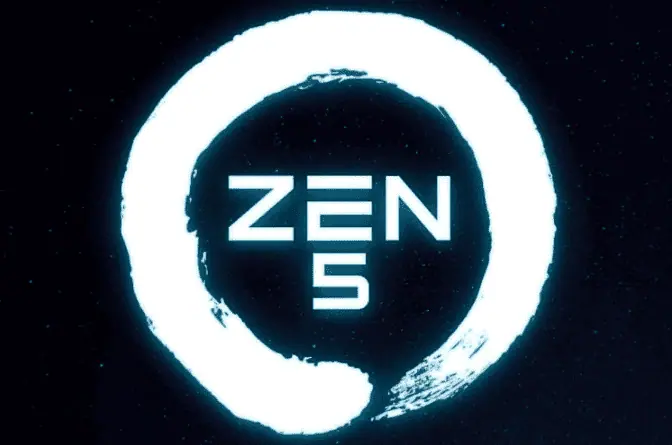
In light of this, as we commemorate this milestone, I’d like to first review AMD’s innovative and transformative history over the past five years and provide a glimpse of what to expect in the next five years, outlining AMD’s future vision.
Since 2019 (AMD’s 50th anniversary), AMD and the semiconductor industry have made tremendous progress. Global semiconductor sales have grown from $412.3 billion in 2019 to $574.1 billion in 2022, and are expected to reach $1 trillion by 2030.
These are the most exciting and important technological innovations in history, and AMD will continue to meet the growing demand for more computing performance with our leading products.
With the incredible market demand for AI rapidly growing, we have significantly expanded our engineering talent pool. AMD boasts the best and brightest talents to deliver the world’s most advanced chips, software, and enterprise AI solutions.
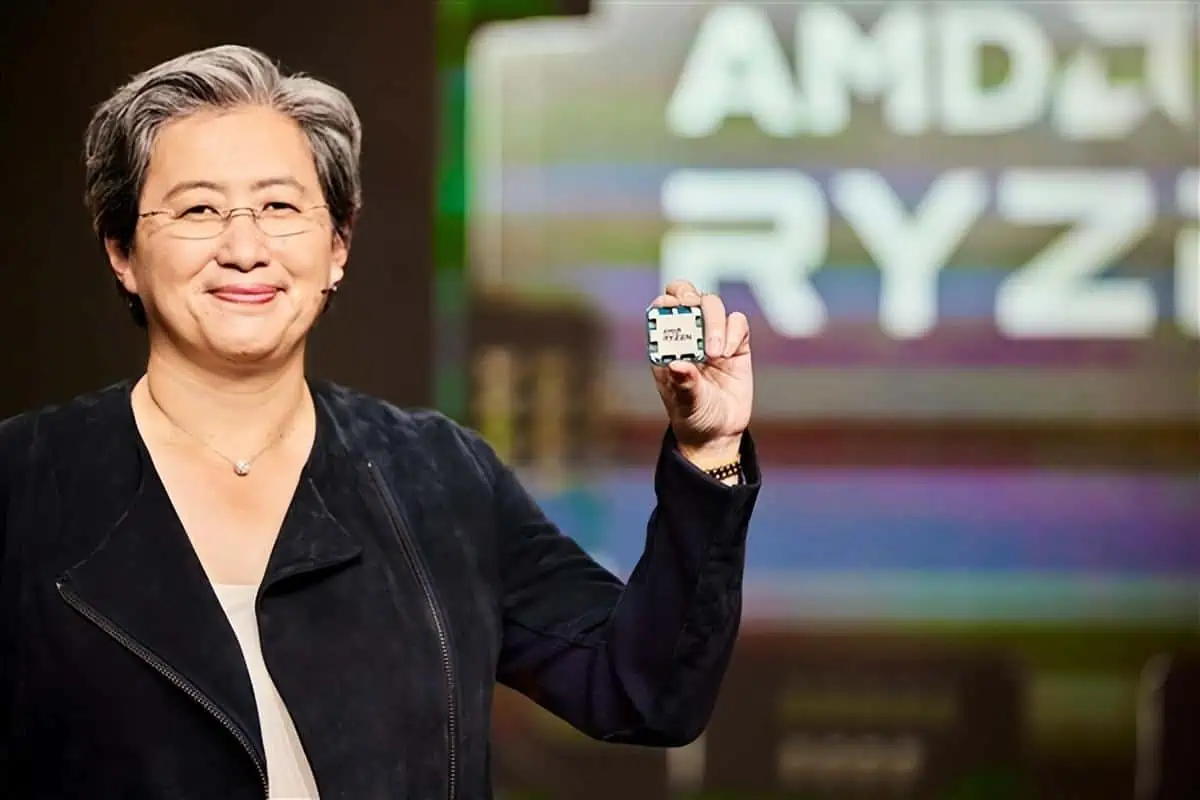
Over the past five years, our global team has more than doubled, with over 15,000 new hires. In 2022, we acquired Xilinx, adding substantial talent, leading intellectual property, and market share to the adaptive computing market with deep customer relationships.
With the acquisition of Pensando, we acquired highly programmable network chips and key technologies, and recent acquisitions of Mipsology and Nod.ai have enhanced our AI software development capabilities.
To meet the growing demand for computing performance and efficiency in the market and to drive continued innovation, our research and development investment has steadily increased over the past five years. During this period, our R&D investment has nearly doubled, from $1.5 billion in 2019 to $5.9 billion in 2023, and we plan to continue investing in breakthrough technologies with early promise.
We have top talent and products, and AMD is uniquely positioned with a wide range of high-performance processors and AI computing chips in fields such as supercomputing, cloud computing, edge computing, embedded systems, and personal computing devices.
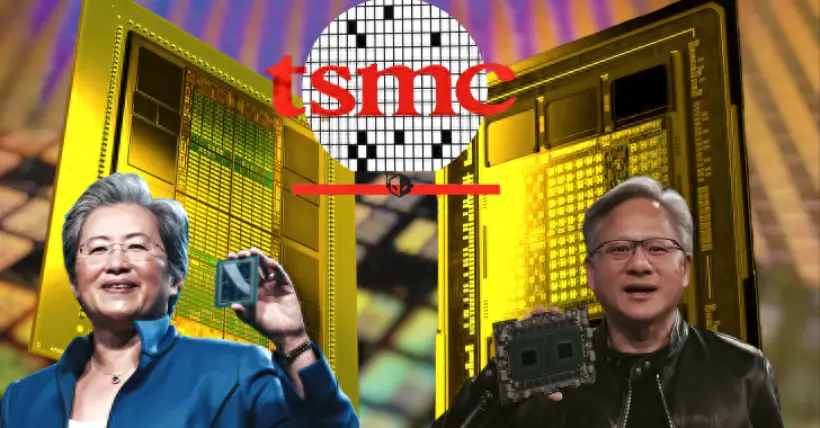
A decade ago, we made a strategic bet on modular solutions and introduced the industry’s first x86 CPU and GPU chip design. Last year, at our advanced AI event, we launched the AMD Instinct MI300 series AI accelerators in collaboration with leading hyperscale vendors and OEMs. These accelerators feature horizontally and vertically stacked chips, providing industry-leading core computing power for large-scale AI inference and large language model training in this rapidly growing market.
AMD’s technology and products not only power the daily lives of billions of consumers worldwide, but sales of our server-grade products have also continued to grow over the past five years.
Today, our technology powers 30% of the world’s servers and 140 of the world’s Fortune 500 supercomputers, including eight of the top ten most energy-efficient supercomputers, which researchers are using to tackle some of the world’s most critical challenges, from cancer to climate research.
Our embedded solutions are integrating and empowering robot-assisted surgery, next-generation automobiles from top-tier automotive manufacturers, 5G and beyond next-generation telecommunication technologies, and Mars exploration, among others. AMD leads the way in the gaming console arena and was the first to bring AI-powered personal computers to market, shipping millions to date.

In the future, enterprise data centers will continue to deploy AI on a large scale, offering new AI experiences, but everyday consumer-grade PCs will also enable users to interact with AI daily. We are witnessing rapid growth in various local AI applications for both personal and business use.
As the demand for integrating AI engines into various client and terminal devices increases rapidly with the proliferation of local AI applications, one year ago, we became the first company to introduce AI into personal computers by integrating dedicated neural processing units (NPUs) on x86 processors.
These dedicated AI engines can efficiently handle local AI applications and also provide better performance and battery life for popular devices such as ultra-thin notebooks. Additionally, we will announce some other exciting news at the Computex event in June.
“No single flower blooms throughout the spring.” We firmly believe that technological progress over the next five years should not be solely dominated by a single (oligopoly) company, product, or solution. It requires and will inevitably give birth to an open ecosystem and deep, close industry cooperation to collectively drive and achieve.
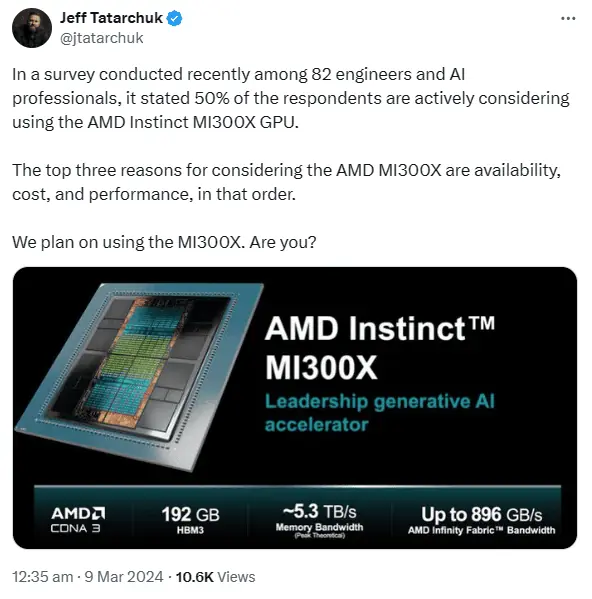
Based on a wide range of computing engine combinations, deep relationships with diverse market customers, and open software functionality, we are currently in a very unique position to meet the growing demand for AI computing in the market. Additionally, we have a solid foundation in cross-cloud and enterprise data center products and customer collaboration, offering leading AI PC products.
Currently, AI is changing the way AMD produces and delivers products. We have shifted from isolated product island development with our software stack to modular IP combinations, where the final product is connected by a single AI software stack. This will make deployment easier for developers and users, representing a solution-oriented approach that surpasses our previous schemes.
Our new solutions must consider optimization from chips to software to final applications, representing a holistic design approach. This comprehensive consideration of all factors in design solutions allows us to continue to follow and maintain the rhythm of Moore’s Law. Despite the relatively small increase in the number of transistors at each new process node, the overall performance and energy efficiency improvements of chips can continue to grow exponentially.
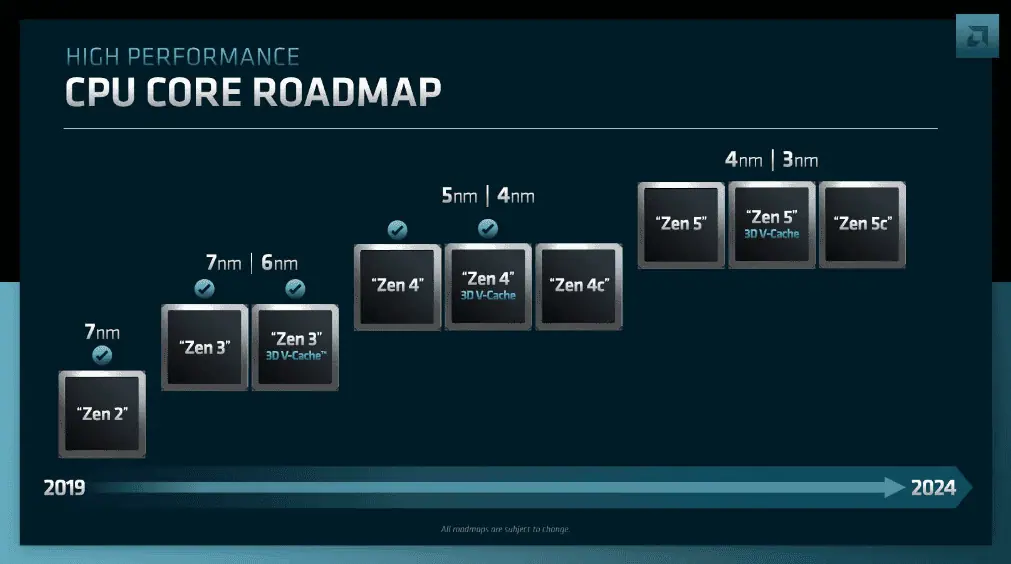
Furthermore, we will accelerate development speed and improve productivity by using more AI applications in our internal workflow processes. Our engineering culture is driven by innovation and significant challenges. This is a positive change and an opportunity to integrate new thinking, and we hope to discover more efficient ways of optimization and experiment with various promising new technologies.
The AI turning point is unprecedented and very exciting. AI will be more pervasive and important than the advent of the Internet. On the occasion of AMD’s 55th anniversary, I am delighted to collaborate with world-class AMD engineers, customers, and industry partners. Guided by a culture of innovation centered on data, we will usher in the next era of adaptive and high-performance computing. (End)
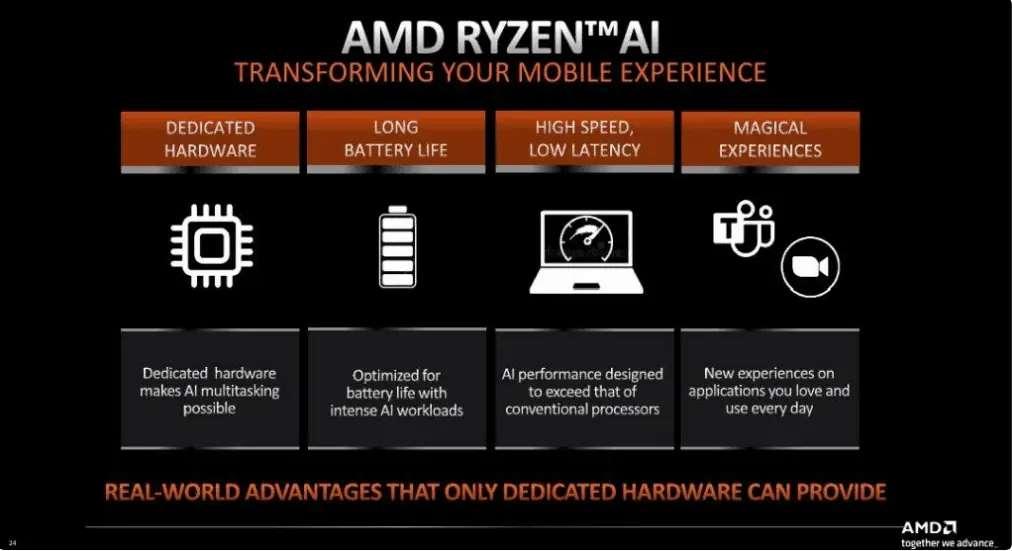
4. Analysis of the speech
It’s evident from this address that AMD now highly values artificial intelligence (AI), raising its importance to unprecedented levels. It sees AI as a significant challenge and opportunity, with the latter outweighing the former.
Although NVIDIA currently holds an absolute leadership position in the AI field, this advantage is not overwhelming. Compared to NVIDIA, AMD believes it can offer more cost-effective solutions to the market in the future and has the opportunity and potential to compete more directly with NVIDIA.
On the other hand, if AMD’s future consumer-grade processors have stronger AI performance, they can capture more market share from Intel and even ultimately surpass their competitors in the consumer-grade processor market. All these possibilities exist.
Overall, for AMD, AI represents a rare opportunity for a perfect overtaking maneuver. The future development and growth potential of AMD are boundless.

Disclaimer: This article is created by the original author. The content of the article represents their personal opinions. Our reposting is for sharing and discussion purposes only and does not imply our endorsement or agreement. If you have any objections, please contact us through the provided channels.



